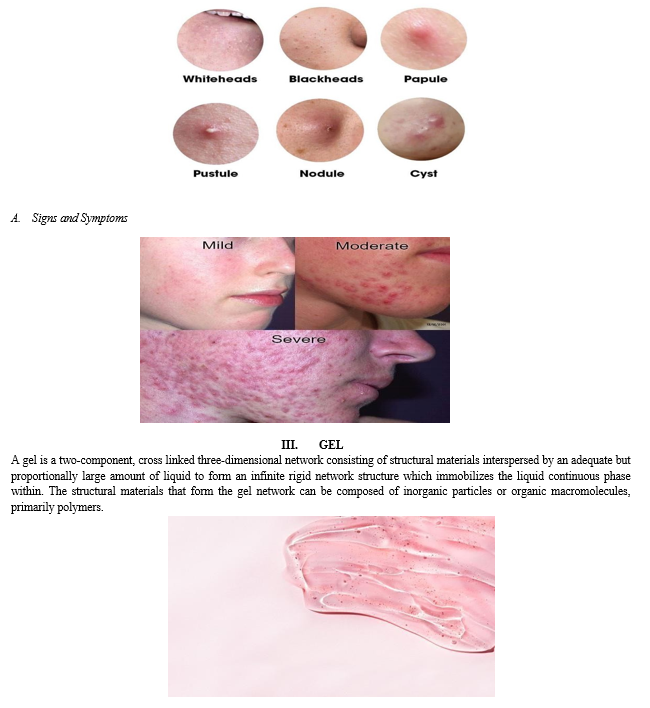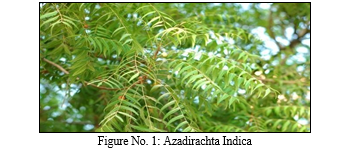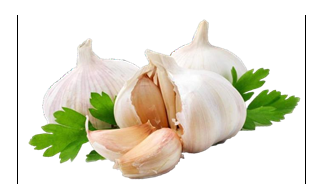Ijraset Journal For Research in Applied Science and Engineering Technology
- Home / Ijraset
- On This Page
- Abstract
- Introduction
- Conclusion
- References
- Copyright
Formulation and Evaluation of Anti-Acne Gel: A Review
Authors: Mr. Sumedh N. Sonkamble, Ms. Nikita V. Hake, Mr. Mahesh V. Kale, Ms. Nikita T. Chalwad, Ms. Nikita S. Mathpati, Mr. Omkar R. Kale, Ms. Neha R. Bombilwar
DOI Link: https://doi.org/10.22214/ijraset.2023.56230
Certificate: View Certificate
Abstract
Acne vulgaris is a long-term inflammatory disorder of the pilosebaceous unit that leads to the formation of inflammatory lesions, seborrhea(Scaly red skin), comedones(Blackheads and whiteheads), Papules(Pinheads), Nodules(Large papules) etc. Propionibacterium acnes and Staphylococcus epidermidis have been recognized as performing bacteria triggering inflammation in acne. Bacilis subtilis support to cause inflammation in acne. Natural remedies are more acceptable in the belief that they are suffering from fewer side effects than synthetic ones. Herbal formulations have a growing demand in the global market. This present research work aims to formulate and evaluate herbal antiacne gel containing ethanolic extract of Neem (Azadirachta indica), Garlic(Allium Sativum). The herbal antiacne gel was optimized by preparing 1 formulations (F1) using an extract of Neem, Garlic a combination of these two extracts. The formulation was evaluated for various parameters like Physical appearance, pH, Drug content, Spreadability, Extrudability, and Anti-acne activity assay against Bacilis subtilis. Amongst all the formulations studied, batch F3 was found optimum for all the parameters. all extracts i.e. ethanolic extract of Azadirachta indica, Allium Sativum in combination show potential effect against Acne vulgaris and also exert a synergistic effect on the bacteria.
Introduction
I. INTRODUCTION
Acne, from the Greek word “Akme", means peak or apex, is genetic or acquired affections of the pilosebaceous units. The correct name for acne is Acne vulgaris. Acne is the mostcommon disorder found among youngsters usually 18-25 years of age. Acne vulgaris, whichis a skin disorder of the pilosebaceous gland which is characterized by formation of seborrhea, comedones, inflammatory lesions and presence of bacteria Propionibacterium acnes, Staphylococcus epidermidis and Staphylococcus aureus in the follicular canal and sebum production It is almost a universal disease occurring in all races and affecting 95% of boys and 83% of girls.
II. ACNE VULGARIS
Acne vulgaris is the most common form of acne. According to a study in The Journal of the American Academy of Dermatology, acne vulgaris usually begins during puberty, but often extends into the twenties, thirties, and beyond. It can appear all over the body but is most common on the face, neck, chest, and back.
Types of lesions that are common in acne vulgaris are.
- Papules: Red, inflamed bumps on the skin that feel tender and have no head are called papules. Squeezing a papule will not get rid of it faster and may cause scarring.
- Whiteheads: Whiteheads result from a pore that is blocked completely. The trapped oil, bacteria, and dead skin cells cause a white head to form on the skin’s surface. They are often treated with over-the-counter acne products.
- Blackheads: When a pore is partially blocked, blackheads often form. The trapped bacteria, oil, and dead skin slowly drain to the surface of the skin to form a blackhead. The dark color is caused by melanin in the skin reacting with oxygen. Blackheads typically take a longer time to clear than whiteheads.
- Pustules: Pustules are the most common type of acne lesion. They usually appear as an inflamed red circle with a center that is white or yellow. They can be popped at home, but acne sufferers shouldn’t touch them with their bare hands and make sure that the material they are touching the skin with is sterile. Acne medications may be more effective after the pustule has been popped.
- Nodules: Severe acne often causes nodules. Acne nodules are hard bumps under the skinthat may be large and last for months. Scarring is a common side effect of nodular acne, so it’s a good idea for anyone with nodular acne to visit a dermatologist for proper treatment.

A. Simple Gel
Cross links can be formed via chemical or physical interactions. This leads to gel classification into chemical and physical gel systems, respectively. Chemical gels are associated with permanent covalent bonding while physical gels result from relatively weaker and reversible secondary intermolecular forces such as hydrogen bonding, electrostatic interactions, dipole di-pole interactions, Vander Waals forces and hydrophobic interactions. Gels consist of two phase system in which inorganic particles are not dissolved but merely dispersed throughout the continuous phase and large organic particles are dissolved in the continuous phase, randomly coiled in the flexible chains.
- Advantages
a. Avoidance of first pass metabolism.
b. Convenient and easy to apply.
c. Improving physiological and pharmacological response.
d. Improve patient compliance.
e. Provide suitability for self-medication
2. Disadvantages
a. Skin irritation of contact dermatitis may occur due to the drug and/or excipients.
b. Poor permeability of some drugs through the skin.0
c. Possibility of allergenic reactions.
Gel Forming Polymers Are Classified As Follows: Natural Polymer
- Proteins i. Gelatin , ii. Collagen.
- Polysaccharides , i. Alginic Acid, ii. Agar, iii. Tragacanth, iv. Sodium Or Potassium Carrageenan, v. Pectin , vi. Gellum Gum , vii. Xanthin , viii. Cassia Tora , ix. Guar Gum
B. Semi-synthetic Polymers
A.Cellulose Derivatives I. Hydroxyethyl Cellulose Ii. Methylcellulose Iii.
Hydroxypropyl MethylCellulose IV. Hydroxypropyl Cellulose V. Carboxymethyl Cellulose.
Synthetic Polymers
- Carbomer I. Carbopol -941 Ii. Carbopol -940 Iii. Carbopol -934 B. Poloxamer
- PolyvinylAlcohol D. Polyacrylamide E. Polyethylene And Its Co-polymers
- Inorganic Substances A. Bentonite B. Aluminum Hydroxide
- Surfactants A. Brij-96 B. Cetostearyl Alcohol.
IV. MATERIALS AND METHODS MATERIALS
Neem, Garlic, Carbapol, PEG 400, Methylparaben, Glycerin, Triethanolamine is used inpresent work.
A. Detail Profile of Material Used
- Neem
a. Synonyms: Nira, Nimb, Vespa, Limba, Nimba
b. Biological Source: Neem consists of the fresh or dried leaves and seed oil of Azadirachta indica belonging to family Meliaceae.

c. Chemical Constituents
Nimbin, 6-desacetylnimbinene, Nimbiene, Nimbandiol, nimbolide, Quercetin, Ascorbic acid, n-hexaacosanol, amino acid, Nimbin & Nimbidinin.
d. Geographical Source
It is found in India, Pakistan, Sri Lanka, Malaya, Indonesia, Japan, Tropical region of Australia and Africa. In India, it is found in Uttar Pradesh, Maharashtra, Tamil Nadu, Rajasthan, and M.P.
e. Uses
- Poultice, applied to boils.
- In worm, jaundice.
- Ulceration of cowpox.
- Antiviral and anti-fungal.
f. Pharmacological Uses
Anti-ulcer, antifertility, antifungal, antiviral, anti-pyretic.
2. Garlic
Synonym: Garlic, Allium, lasun
a. Biological Source
It consists of the bulb part of the plant known as Allium sativum Linn. belonging to family Liliac

b. Chemical Constituents:
Allicin, Allin, 29% Carbohydrates, Volatile oil, S-allyl mercapto cysteine, S-allyl cysteine.
c. Geographical Source:
Garlic is cultivated in India, Russia, USA, Italy, and southern Europe.
d. Uses
- Carminative.
- Expectorant.
- Stimulant.
- Disinfectant.
e. Pharmacological uses
Anti-bacterial, Anthelmintic, Rubefacient.
V. METHODS
A. Procurement of Plant Material
The fresh leaves of Neem (Azadirachta indica) were collected from the Medicinal Plant garden of P.S.G.V.P.Mandal’s College Of Pharmacy, Shahada,
District-Nandurbar and the bulb part of Garlic (Allium Sativum) were purchased from the local market of Shahada. The plant specimens were authenticated by Dr. Santosh K Tayade, HOD of Botany, Art’s Science and Commerce College, Lonkheda, Shahada, Dist-Nandurbar (MS).
B. Extraction Procedure
- Weigh accurately the quantity of Neem and Garlic powders.
- Place each powder in the separate chamber of the soxhlet apparatus.
- This soxhlet extractor placed into RBF containing the extraction solvent i.e. Alcohol and water in a ratio of 1:1.
- Take the extraction solvent i.e. water + Alcohol in the ratio of 1:1 and pass at least the three cycles from thimble containing the drug.
- Place the reflux condenser on top of the soxhlet apparatus which closed with cotton plu gfrom the top and allow to pass water from top to the bottom of the condenser.
- Then switch ON the assembly and pass the 5-6 cycles into the apparatus.
- After complete, the extraction removes the soxhlet apparatus and collect the extract from RBF.
- After collecting the extracts it allows to evaporate on the water bath to get the concentrated extract.
C. Formulation of Gel
The gel was prepared by using a 1% concentration of the extracts. In a separate beaker, Carbopol 940 was dispersed uniformly in distilled water with continuous stirring, avoiding air entrapment and allowed to soak overnight. In another beaker, methyl paraben was dissolved in the remaining amount of distilled water by gently heating. To this solution, the herbal extracts were added and triturated well. The above mixture was then added to the carbopol mixture and stirred well. Finally, propylene glycol and triethanolamine were added and the pH was adjusted to 6.8-7. The prepared formulation was filled in a suitable container and labeled. Various formulation batches were prepared; the composition of formulations was shown in Table No. 1.


- Advantages Of Gel Formulations
- Gels Are Easy To Formulate As Compared To Other Semisolid Dosage Forms.
- A Gel Is An Elegant Non-greasy Formulation.
- It Can Be Used As Controlled Release Formulation By Entwining The Polymer More ThanOnce.
- Gels Have Good Adherence Property To The Site Of Application.
- They Are Biodegradable And Biocompatible.
- The Retention Time Of Gels Is Higher Than Other Topical Dosage Forms.
- They Have Excellent Tolerability To Certain Stress Conditions.
- They Form A Protective Layer On The Application Site.
2. Disadvantages Of Gel Formulations
- The Effect Of Gels Is Comparatively Slower And Sustained.
- The Additives Or The Gelators May Induce Irritation.
- The Water Content May Increase The Chances Of Microbial Or Fungal Attack In Gels.
- Syneresis (Expulsion Of Solvent From The Gel Matrix) May Occur In Gels During Storage.
- Solvent Evaporation From The Formulation May Result In Drying Of The Gel.
- Covalent Bonds Present In Some Gels May Render Them Unbreakable Thus Sealing The Medicament Inside The Gel Matrix.
- Flocculation In Some Gels May Produce An Unstable Gel.
D. Evaluation Parameters of the Formulated GelsMeasurement of pH
The pH of various gel formulations was determined by using a digital pH meter. One gram ofgel was dissolved in 100 ml distilled water and stored for two hours. The measurement of pH of each formulation was done in triplicate and average values are calculated.
E. Drug Content
1 g of the prepared gel was mixed with 100ml of a suitable solvent. Aliquots of different concentrations were prepared by suitable dilutions after filtering the stock solution andabsorbance was measured. Drug content was calculated using the equation, which was obtained by linear regression analysis of the calibration curve.
F. Viscosity Study
The measurement of viscosity of the prepared gel was done with a Brookfield Viscometer. The gels were rotated at 0.3, 0.6, and 1.5 rotations per minute. At each speed, the corresponding dial reading was noted. The viscosity of the gel was obtained by multiplicationof the dial reading with the factor given in the Brookefield Viscometer catalogs.
G. Spreadability
It indicates the extent of the area to which gel readily spreads on application to the skin or affected part. The therapeutic potency of a formulation also depends upon its spreading value.Spreadability is expressed in terms of time in seconds taken by two slides to slip off from gel which is placed in between the slides under the direction of a certain load. Lesser the time is taken for the separation of two slides, the better the spreadability.
It is calculated by using the formula.
S = M. L / T
where,
M=wt.tied to upper slide. L = length of glass slides.
T = time taken to separate the slides.
H. Extrudability Study
After the gels were set in the container, the formulations were filled in the collapsible tubes. The extrudability of the formulation was determined in terms of weight in grams required to extrude a 0.5 cm. ribbon of gel in 10 seconds.
I. Skin Irritation Study
Guinea pigs (400-500 g) of either sex were used for testing of skin irritation. The animals were maintained on standard animal feed and had free access to water. The animals were keptunder standard conditions. Hair was shaved from the back of guinea pigs and an area of 4 cm2 was mark done both sides, one side served as control while the other side was tested. The gel was applied (500 mg/guinea pig) twice a day for 7 days and the site was observed for any sensitivity and the reaction if any, was graded as 0, 1, 2, 3 for no reaction, slight patchy erythema, slight but confluent or moderate but patchy erythema and severe erythema with or without edema, respectively.
J. In vitro Diffusion studies
The diffusion studies of the prepared gels can be carrying out in Franz diffusion cell for studying the dissolution release of gels through a cellophane membrane.
A gel sample (0.5g) was taken in the cellophane membrane and the diffusion studies were carried out at 37 ± 1° using 250 ml of phosphate buffer (pH 7.4) as the medium. Five milliliters of each sample were withdrawn periodically at 1,2, 3, 4, 5, 6, 7, and 8 h and each sample was replaced with an equal volume of fresh dissolution medium. Then the samples were analyzed for the drug content by using phosphate buffer as blank.
K. Stability
The stability studies were carried out for all the gel formulations by freeze-thaw cycling. Here, by subjecting the product to a temperature of 4° C for 1 month, then at 25°C for 1 month, and then at 40°C for 1 month, syneresis was observed. After this, the gel is exposed toambient room temperature and liquid exudate separating is noted.
L. Homogeneity
After the gels have been set in the container, all developed gels were tested for homogeneityby visual inspection. They were tested for their appearance and presence of any aggregates.
M. Grittiness
All the formulations were evaluated microscopically for the presence of any appreciable particulate matter which was seen under a light microscope. Hence obviously the gel preparation fulfils the requirement of freedom from particular matter and from grittiness as desired for any topical preparati.
Conclusion
Acne vulgar is is a general skin disease which affects common people at least once during his or her total life. Mainly in the teenage time this disease affects to the human being but many people in higher age (between 20-40y)are also became affected by the disease. From many research, a confidence has been grown in people’s mind on herbal medications as they are safe than synthetic one. The side effects like contact allergy, local irritation,scaling, photo sensitivity, itching, pruritus, redness, skin peeling,xeros is of the skin etc. are the major reasons to avoid synthetic drugs. The present study was done with formulation and evaluation of herbal anti-acnegels. The main reason behind this investigation was to formulate as table and safe anti-acnegel without using any type of synthetic additive i.e. herbal anti-acnegel. Use of synthetic additive scauses various side effects of skin, to overcome this problem use anti- acnegel from extract of Neem, Garlic are the best solutions. Different evaluation test were performed to check the performance of gel. From the result of performed test we conclude that gel formulation of Neem, Garlic extract are safe to use.
References
[1] Mr. Suraj Kishan Ghodke, 2Mr. L.R. Bagwan, 3Dr. Hingne L.D. www.ijcrt.org © 2021 IJCRT | Volume 9, Issue 12 December 2021 | ISSN: 2320-2882 [2] Mr. Balaprasad Baheti ,Miss.Bhagyshri Khamkr , Mrs.Khan Ayesha Iram Aziz , Mr.Deepak Joshi Formulation And Evaluation Of Anti Acne Gel © 2020 JETIR May 2020, Volume 7, Issue 5 www.jetir.org (ISSN-2349-5162) [3] Madhuri Latha Thadanki*, Salagrama Akhila, Asma Amatul Qadeer, Amtul Aleem Safura and Shaik Hamed World Journal of Pharmaceutical Research SJIF Impact Factor 8.084 Volume 10, Issue 9, 267-277. ISSN 2277– 7105 [4] Rahul R. Borse et al. Formulation and Evaluation of Herbal Anti-Acne Gel Containing Neem and Garlic Extract International Journal of pharmacy and pharmaceutical research January 2020 Vol.:17, Issue:2 [5] Sneha Bharti, Harini Chowdary Vadlamudi * Department of Pharmaceutics, Acharya and BM Reddy College of Pharmacy, Hesaraghatta Road, Bangalore, Karnataka, India Int. J. Res. Ayurveda Pharm. 11 (5), 2020(ISSN:2229–3566) [6] Swarnali roy1, sankhadip bose2, dhrubajyoti sarkar3, sanjit mandal4, sipra sarkar5, sudip kumar mandal6*formulation and evaluation of anti-acne gel containing murraya koeinigii extract, International Journal of Current Pharmaceutical Research ISSN- 0975-7066 Vol 12, Issue 4, 2020 [7] Ganesh Sambhaji Pawale, Vishwavijay Sanjay Patil, Prathmesh Kiran Powar, Sairaj Sattapa Powar, Dakshata Navnath Pinjari, Ms.Ankita A. karande R. L. Tawde Foundations Sarojini college of pharmacy kolhapur , Maharashtra, India 416008. Formulation and evaluation of anti-acne gel containing natural agent. ISSN: 2455-2631 September 2022 IJSDR | Volume 7 Issue 9 [8] H.A.Sawarkar*, S.S.Khadabadi, D.M.Mankar, I.A.Farooqui, N.S.Jagtap Govt. College of Pharmacy,Pharmacognosy & Phytochemistry Department, Kathora Naka, Amaravati- 444 604 (M.S.),IndiaDevelopment and Biological Evaluation of Herbal Anti-Acne Gel International Journal of PharmTech Research CODEN (USA): IJPRIF ISSN : 0974-4304 Vol.2, No.3, pp 2028-2031,
Copyright
Copyright © 2023 Mr. Sumedh N. Sonkamble, Ms. Nikita V. Hake, Mr. Mahesh V. Kale, Ms. Nikita T. Chalwad, Ms. Nikita S. Mathpati, Mr. Omkar R. Kale, Ms. Neha R. Bombilwar. This is an open access article distributed under the Creative Commons Attribution License, which permits unrestricted use, distribution, and reproduction in any medium, provided the original work is properly cited.

Download Paper
Paper Id : IJRASET56230
Publish Date : 2023-10-19
ISSN : 2321-9653
Publisher Name : IJRASET
DOI Link : Click Here
 Submit Paper Online
Submit Paper Online

